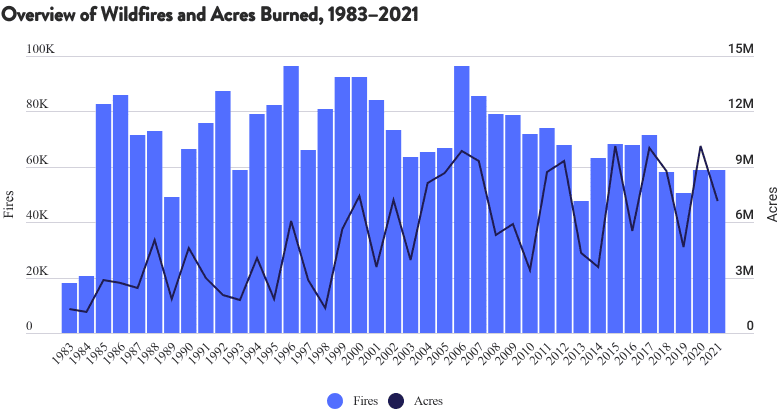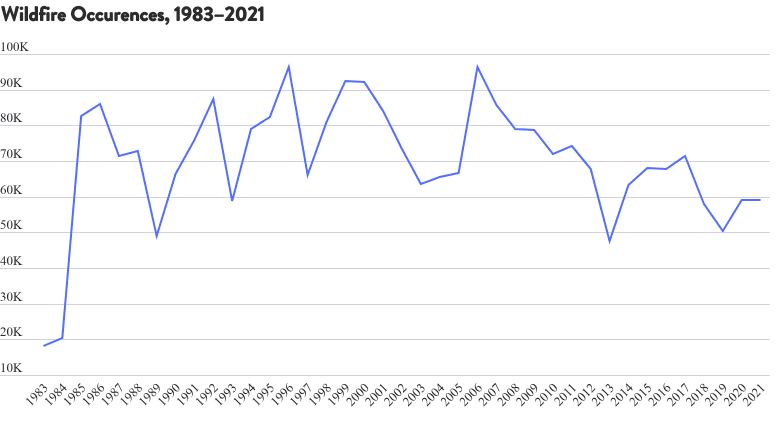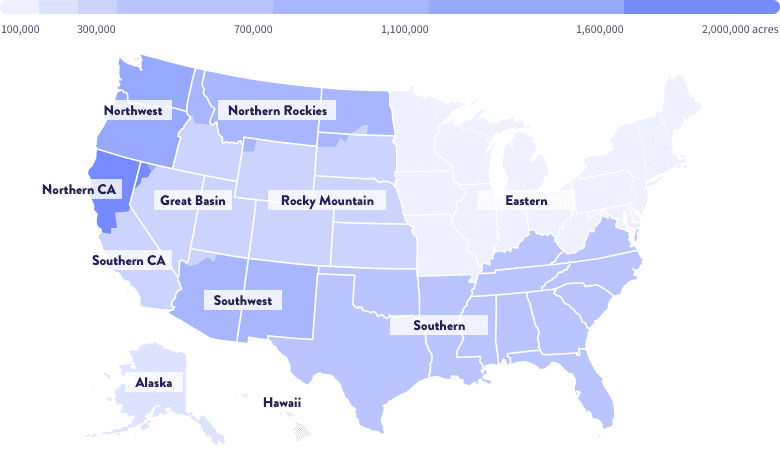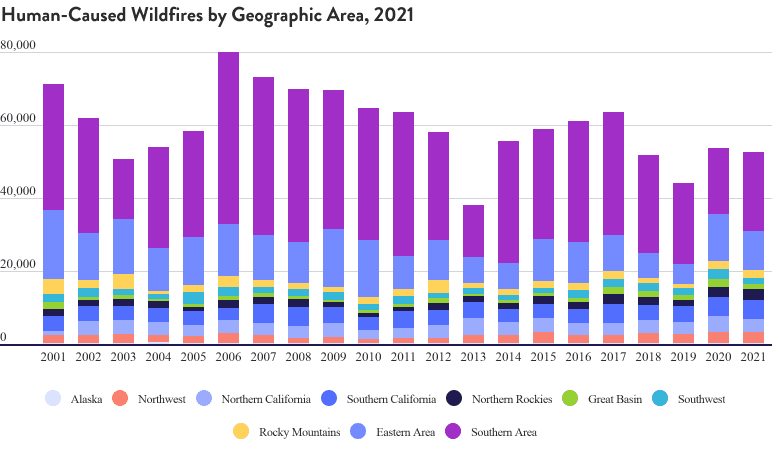In 2021 alone, there were 58,985 wildfires in the U.S., which burned over 7 million acres of land. Although wildfires are considered natural disasters, people are responsible for about 90% of them. The other major causes are lightning and lava.
Wildfires are not only an environmental concern but also a health concern. They affect an area’s air quality, increasing the amount of pollution. It may also cause respiratory diseases, leading to more severe health issues.
Understanding wildfire statistics can inform those in wildfire-prone areas about their risk and the possible effects on their finances, including property loss. Exposure may also cause compromises to an individual's health, leading to an increased need for medical attention and more medical expenses.

































